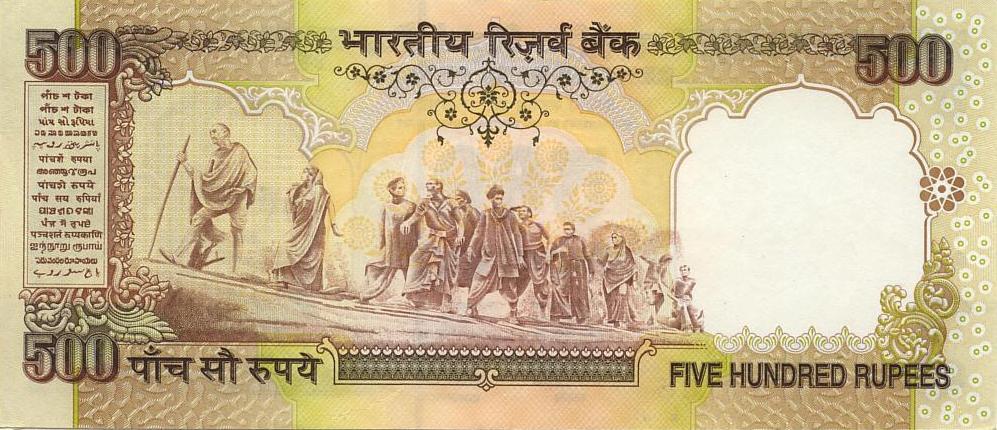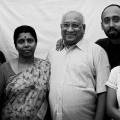If you ever need a reminder of the diversity of India, just take a look at any currency note. On the back, you will find the value of note in fifteen languages, along with English and Hindi.

India’s languages are perhaps the most telling way that this is a country of countries. It is possible that you could have a room of four or five Indians and none of them would be able to understand the other.
Why should I care about the languages of India? Don’t they speak English well enough?
It’s true that most Indians that you will do business with speak English at a high level. In fact, most of them speak at least three. Understanding the linguistic talents of Indians will give you a lot more respect for their abilities and make you less likely to correct any inconsequential errors you notice.
A person’s ‘mother-tongue’ is a very special and intimate part of their being. It is quite rare for an outsider to be able to recognize someone’s heart language. If you can show that you care enough to know even just the name of someone’s first language, you will build a lot of relational capital.
Finally, it is important to recognize that when you work with a group of Indians, you should insist on people using a language that is universally known and most comfortable. For example, if you are working in Chandigarh, and everyone speaks Hindi except for you (and they are not comfortable in English), then the onus is on you to up your language skills. However, if you are in Chennai with a group of Tamilians and a few northerners mixed in, you should insist on the team using English and not Tamil for the sake of those who will feel uncomfortable and left out.
Wait, I thought everyone spoke Indian?
There is no national language in India. Hindi and English are the two languages used by the central government, and there are around 20 other officially recognized languages.
Choosing a single language for India was an impossible task at the time of independence and things haven’t changed since then. The initial plan was to use Hindi and English officially, with a plan to move to only Hindi in 15 years. However, when the 15 years were up, there was a lot of anti-Hindi backlash (mostly from Tamil Nadu where the language is rarely spoken) and the result has been an eternal compromise.
To give some perspective, imagine that the European Union was forced to become a single country and pick a language. You could only imagine how the French would react if they were forced to use German everywhere.
Language Families
Broadly speaking, there are two main families of languages: those that find their roots in Sanskrit (Hindi, Bengali, Marathi, Urdu, Gujarati, Punjabi, Assamese, Odia, and many others), and Dravidian languages (Tamil, Telugu, Malayalam, and Kannada).
Major Languages
All together, there are 122 major languages spoken by more than 10,000 people. Here are short descriptions of the languages in India that are used by more than 10 million people. Keep in mind that many of these languages have their own writing script as well.
Hindi
Originally called Hindustani, this is the major language of India with somewhere around 420 million speakers. Most are found in what is called the “Hindi belt”, which is the central and northern heavily populated states of Uttar Pradesh, Haryana, Madhya Pradesh, and Rajasthan. It is the fourth most spoken language on earth.
English
There are around 125 million English speakers in India. It functions as a secondary common language when some speakers don’t know Hindi. However, there are only about 200,000 people who know it as their first language.
Bengali
Locally called Bangla, there are 83 million speakers, mostly in West Bengal, Assam, and Jharkhand. Bengali has a rich cultural heritage with influences in art and literature. The national anthems of India, Bangladesh, and Sri Lanka were all originally Bengali poems. With around 200 million speakers worldwide, it is the seventh most spoken language in the world, larger than any other Indian language apart from Hindi.
Telugu
There are 74 million Telugu speakers in India, mostly in Andhra Pradesh and Telangana, but there are many speakers throughout India.
Marathi
This is s common language in Mumbai, and with 72 million speakers, has the 20th most speakers in the world.
Tamil
Properly written as thamizh, it is one of the oldest surviving classical languages in the world. Its current form is still closely related to the ancient writings. There are 60 million speakers in India, with an additional 10 million outside India. It was the first Indian language to be printed and published as a book.
Urdu
There are about 52 million Urdu speakers in India, most of which are in heavily Muslim areas (Jammu & Kashmir, Telangana, Delhi, etc.). It is extremely similar to Hindi in sound, and speakers of both languages can understand each other well, although the Urdu script is very different.
Gujarati
With its 46 million speakers, Gujarat is the first language of many famous Indians – Mahatma Gandhi, Dhirubhai Ambani, JRD Tata, current Prime Minister Narendra Modi, and anyone named Patel.
Kannada
Around 37 million speakers, it is the major language of Karnataka, home of Bangalore.
Malayalam
The common language in Kerala, Malayalam has 33 million speakers and has the largest number of letters (alphabets) of any Indian language. Malayalam is one of India’s classical languages, pointing to its rich history.
Odia
Odia is another classical language of India and has 32 million speakers, mostly along the eastern states of Odisha, Jharkand, and Chhattisgarh.
Punjabi
Punjabi is a unique language in India. There are only 29 million speakers in India most of whom are in Punjab, Delhi, Rajasthan, and Delhi. However, there are over 100 million speakers worldwide, as it is a common language in Pakistan. Punjabi is also very prominent in most Bollywood movies and most of the top songs are performed in Punjabi, making it very common to hear throughout India.
Assamese
With 13 million speakers, Assamese is the common language in a lot of the northeastern states.
Maithili
This is the major language of Bihar with about 12 million speakers.
Other languages you might hear of:
Rajasthani and Marwari are common to Rajasthan, but some list club them in as a dialect of Hindi. Similarly, Bhojpuri is often officially called a dialect of Hindi. Nepali is spoken along the border of Nepal and Kashmiri is spoken in Jammu and Kashmir.
Seeing the languages of India listed out, you sometimes wonder how it is possible to run a country with so many different languages. Not a problem. As they say in Bangalore, swalpa adjust maadi (just adjust a little).





Good Evening dear Neil,
A very good article on Indian languages. It is also a knowledge sharing.
Thanks and blessings
Uma
Thank you!
Thanks for the article, really great. How many times have I been asked back home if I speak Indian… Recently I met a family from India in the train in Switzerland. I listen to them talking and realized it was not Hindi but … so I asked them and it was Bengali. Needless to say that for the rest of the train trip we talked about India, where they lived and about their sight seeing in Switzerland.
Great story! If I ever meet someone outside of India and can pick up that they are speaking Tamil, the next thing that happens is usually an invitation to their home for dosa. It is really a powerful connection!
Excellent desi language primer!! I’m off to Kolkata tomorrow and can’t wait to be surrounded by the sweet sounds of Bangla. 🙂
Sounds great! (Lots of good tasting too ;-))